Career and Technical Education (CTE) Month
Click each state name to explore CTE-related projects in Texas, Massachusetts, and Washington.

Click each state name to explore CTE-related projects in Texas, Massachusetts, and Washington.

Learn about our ongoing study examining learning environments that enable undergraduate students at Historically Black Colleges and Universities (HBCUs) to attain doctoral degrees in science and engineering.

Social network analysis is a relationship-mapping research method that allows researchers to find and analyze patterns within a group.

This website, created by AIR researchers, provides useful information to data reporters and to data users on the data elements related to distance education collected in IPEDS.
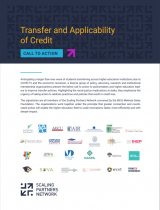
This call to action discusses the disproportionate impact from COVID-19 on Black, Latinx and Indigenous students, who have been hardest hit by practices and policies that result in credit loss when they transfer.

This journal article discusses findings from a study in which researchers developed a machine learning classifier to predict nontraditional student dropout.
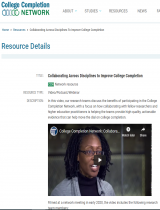
In this video, our research teams discuss the benefits of participating in the College Completion Network, with a focus on how collaborating with fellow researchers and higher education practitioners is helping the teams provide high-quality, actionable evidence that can help move the dial on college completion.
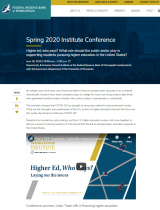
AIR’s Dr. Rachel Dinkes joined panelists from academia, policymaking, and the U.S. higher education system to discuss who should foot the bill as postsecondary education expands in the United States.
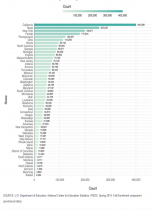
This blog post uses newly released provisional data from the Integrated Postsecondary Education Data System’s (IPEDS) Fall Enrollment (EF) survey to provide an updated look at whether beginning college students are attending school in their home state or heading elsewhere.
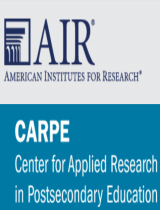
In this video we introduce the Center for Applied Research in Postsecondary Education (CARPE) at the American Institutes for Research. CARPE is committed to improving postsecondary education for all students by generating rigorous evidence and connecting research and practice.
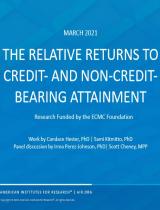
AIR is analyzing 20 years of the National Longitudinal Survey of Youth 1997 panel using an individual fixed-effects regression strategy. The purpose of the analysis is to estimate the returns to non-credit-bearing credential and licensure pathways compared with credit-bearing credential and associate degree programs that are unrelated to persistent differences in the respondents’ characteristics (e.g., ability). Findings show that credit-bearing credentials yield an approximately equal likelihood to be employed as noncredit-bearing credentials, but significantly improved earnings of about $7,000 a year.